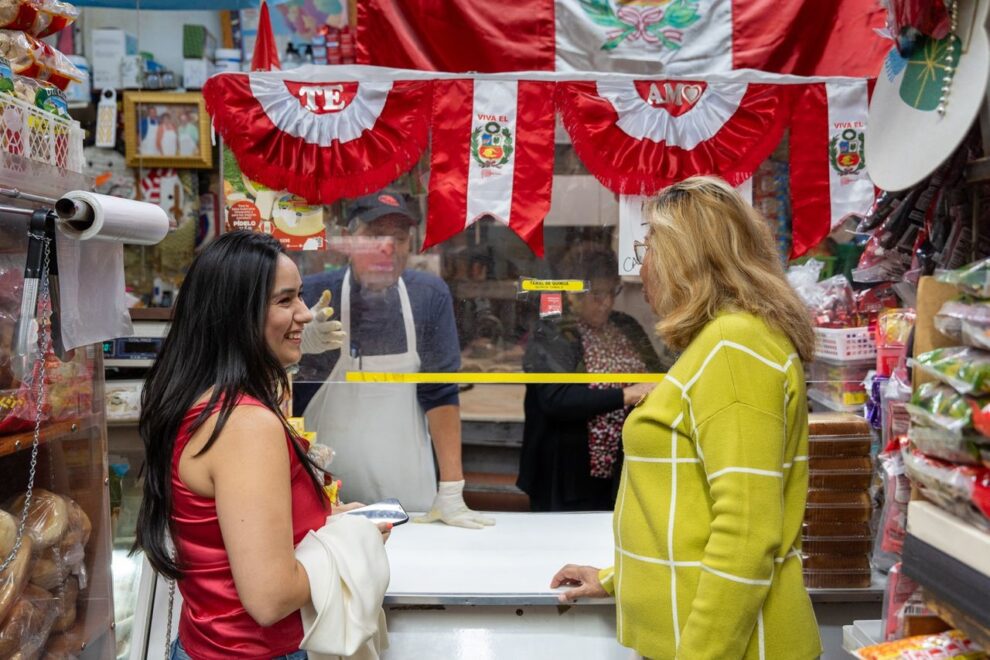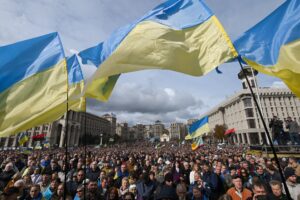The days I miss Miami most are the ones I find myself craving Nicaraguan food and wishing I was in my hometown where all I have to do to get my hands on some of my favorite dishes is hop on over to the city’s most Nicaraguan neighborhood, “Little Managua.” Sadly for this Nica, there’s no “Little Managua” in New Jersey but thankfully there is a “Little Lima” in Paterson and as a longtime lover of Peruvian cuisine and culture, I couldn’t have been more excited to make my way there and explore its colorful, lively streets like an “honorary peruana” — a special title given to me by my tour guide, Deputy Mayor Maria del Pilar Rivas.
As far as tour guides go, Maria del Pilar is the best there is: The 63-year-old Paterson resident and entrepreneur was the driving force behind the area of Mill, Market, Main, and Cianci streets’ official designation in 2016 as “Peru Square.” She says some people still call the area that’s lined with Peruvian bakeries, bodegas, restaurants, hair salons and travel agencies “Little Lima” but that many, especially locals, now refer to the neighborhood by its “real” name.
“Either way,” she says, “For thousands and thousands of Peruvians in New Jersey, this is home.” And that’s been the case for many, many decades now. In the early 1950s, a large wave of working-class Peruvians immigrated to the “Silk City” to do factory jobs. And in the ‘80s, political turmoil in the South American country pushed thousands more to move here. Since then, and for a variety of reasons including economic and civil unrest, Peruvians have continued moving to the U.S., with nearly 30,000 settling in Paterson, a city of about 150,000 residents, where many business owners told me those who came before them, “abrieron el camino,” paved the way.
I met Maria del Pilar Wednesday morning at our first stop, Los Inmortales, a Peruvian mini-mart, café and bakery on Market Street that she says has long been a staple in the community. Right away, I noticed the storefront’s bright red walls and its large white signage, an obvious ode to la rojiblanca — the red and white Peruvian flag — that’s found practically everywhere on this street.
Inside the shop, more flags — as decoration on a back wall, on fútbol jerseys for sale, and on hundreds of food products lining its shelves. On one wall, countless jars of aji amarillo (yellow chili pepper paste) and achiote (annatto paste), both essential seasonings in Peruvian cuisine, sit alongside bottles and bottles of Peruvian spices, sauces and canned goods. Looking at the variety of ingredients and at the brands of some of the products, all I can think of is my time in Lima years ago.
“It’s almost like going into a small market or bodega [in Peru], right?” Maria del Pilar says. “I mean, just look at all the products …we have everything here that we need to cook many of our traditional dishes like a lomo saltado or a papa a la huancaína.” And at our next stop, Peruvian Market, a grocery store and deli on Cianci Street, she tells me, there’s an even greater variety of products because the shop’s a bit bigger and has a larger selection of pre-cooked and frozen foods.

Deputy Mayor Maria del Pilar Rivas says mini-marts and bodegas in Paterson’s Peru Square have all the ingredients needed to cook traditional Peruvian dishes. Here, she’s touring the aisles at Peruvian Market, a grocery store and deli, in Cianci Street in Paterson on Wednesday, October 11, 2023.Julian Leshay | For NJ Advance Media
There, we find manager Erich Martinez stocking the fridges in preparation for the weekend. “That’s when people shop for the week ahead so that’s when we’re the busiest,” he says. He offers me a cafecito and a pastry but I politely tell him I’m saving my appetite for lunch at a nearby restaurant and he doesn’t blame me. “Oh, you’ll love it there,” he says before seeing us off.
We visit a string of other longstanding businesses including a butcher shop, a hair salon and a travel agency (with a large stuffed animal llama in the display case), and chat with about a dozen people along the way. I quickly realize this is a place I’ll soon return to. Everyone’s just so warm, so friendly, so ready to share stories about their lives, about what it was like “hace años cuando vinimos a este país,” long ago when they first came to this country, colorful tales of the immigrant experience, of working hard to try to give their children — many now professionals in their 30s and 40s — a better life. And succeeding.
At Somos Tu Peru, over a hot coffee and a delicious lomo (stir-fried beef) sandwich and with folkloric Peruvian music playing faintly, Maria del Pilar tells me her own story. She left her hometown of Piura as a young girl and like many immigrants headed to Lima, Peru’s capital, before crossing the Rio Grande. In 1978, at age 18, she made it to Paterson. “And the rest is history!” she says. “This is the city where my sons were born, where I raised them as a single mom, where I’ve had my businesses, first a bridal shop and later a bakery and a party supply,” she tells me. “This is the city I love so much and that I’m always so proud of and so proud to represent because of what it is and what it means for our Peruvian community.”
Max Herman, a New Jersey City University professor who’s an expert in urban sociology, says areas like Peru Square have a certain vibrance and pull to them he attributes to people like Maria del Pilar, and the many others, who pour into them.
These ethnic enclaves, he explains, usually thrive because they’re entrepreneurial and money tends to circulate throughout and within them. “And what that does is create an opportunity for people not just to live amongst their own people, but to work amongst their own people and form what’s largely a self-contained community,” he says.
Still, several of the Peru Square business owners I spoke with told me they’re thrilled to see new faces at their shops and restaurants and want to see even more of them.
“We welcome everyone,” Jorge De La Cruz, owner of Tana’s Food Market, told me. He says since 2002, when he and his wife Gladys bought the meat market, “Argentinians shop here, Colombians shop here, people from Ecuador … Latinos from all countries and non-Latinos, too.”
“It makes us so happy when people of other nationalities and backgrounds are interested in learning about our [Peruvian] foods, customs and culture,” he said. “We’re proud of our roots and our heritage and want to share it with others.”
Carlos Vera, owner of Panchito’s Restaurant and head of the Peru Square Business Association, echoed that sentiment. “All of these shops, these restaurants and bakeries, you see here, it’s not all just for us,” he told me in Spanish. “It’s for everyone in New Jersey and beyond to come, experience and enjoy.”
Source : nj.com











